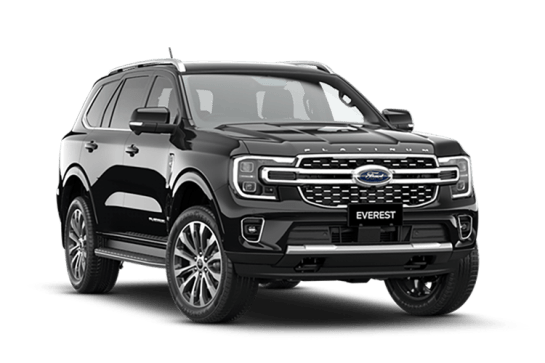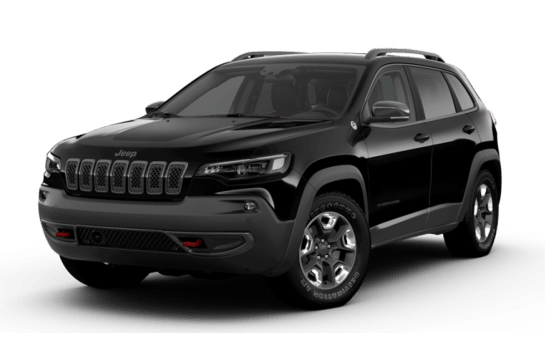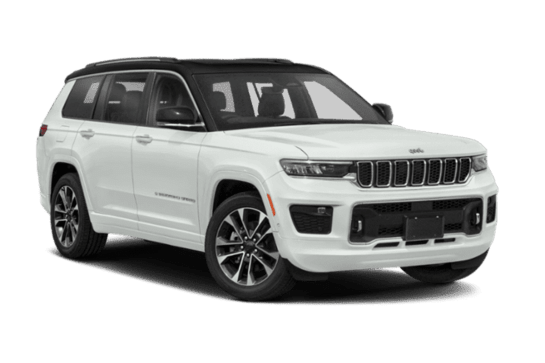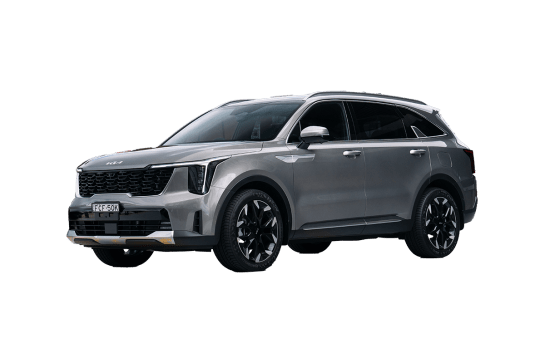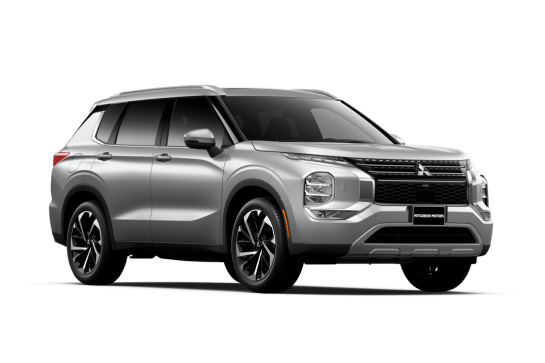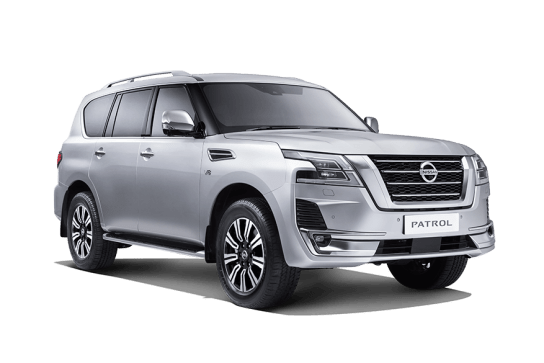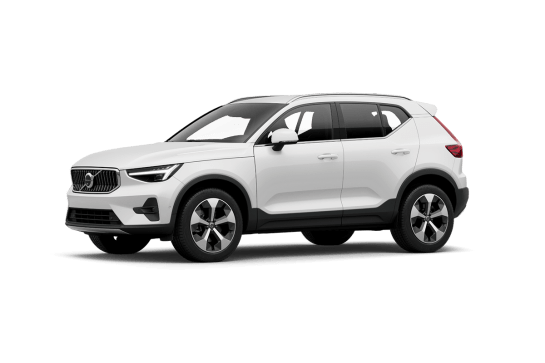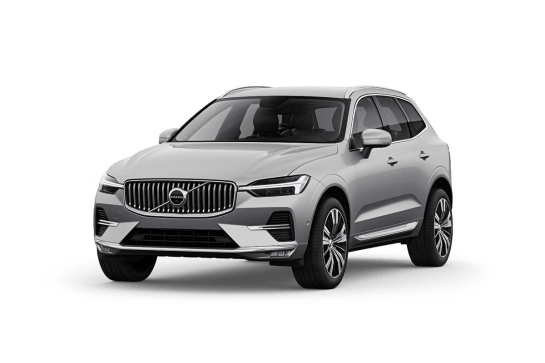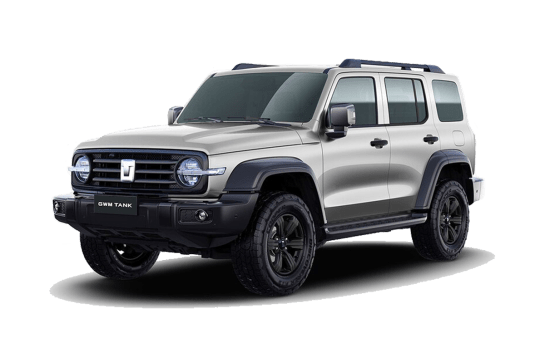
GWM Tank 300 VS Mitsubishi Outlander
GWM Tank 300
Likes
- Price-tag
- Packed with features
- Very capable off-road
Dislikes
- Payload
- A few driver-assist tech issues
- Needs better all-terrain tyres
Mitsubishi Outlander
Likes
- Nice to drive
- Well-appointed cabin
- Refined hybrid system
Dislikes
- No spare tyre
- Squeeze third row
- Multimedia touchscreen should be bigger
Summary
GWM Tank 300
A new petrol-powered 4WD seems an anomaly in a world seemingly hell-bent on rapidly embracing EVs.
However, there’s still room for a traditional off-road vehicle or two – especially those with front and rear diff locks – for the time being, anyway.
I tested the Chinese-made GWM (Great Wall Motors) Tank 300 petrol in late 2023 and noted there was a lot to like about it, although I also highlighted a few negatives.
Read more about
After recently revisiting it for another hard-core off-road test, have I changed my mind?
Read on.
| Safety rating | |
|---|---|
| Engine Type | 2.0L turbo |
| Fuel Type | Regular Unleaded Petrol |
| Fuel Efficiency | 9.5L/100km |
| Seating | 5 seats |
Mitsubishi Outlander
At this point in history, hybrid vehicles are your best bet if you want to feel good about trying to save the world while actually enjoying daily driving duties and avoiding any (real or imagined) driving-range anxiety you may experience in a full EV.
A hybrid vehicle – i.e. one with a traditional fuel source (petrol or diesel) and electric power – is a cheaper alternative to a full-blown EV and yields better fuel economy and less environmental impact than a standard ICE vehicle (powered only by petrol or diesel).
And the Plug-in Hybrid EV (PHEV) version of the Outlander offers welcome fuel cost-savings over ICE vehicles and, in top-spec GSR guise, it has a premium look and feel and, on paper, packs plenty of standard features into a sub-$80,000 package.
Read more about
- Mitsubishi's updated family favourite spotted: 2025 Mitsubishi Outlander takes shapes as it prepares to battle the Toyota RAV4 Hybrid, Nissan X-Trail ePower and Kia Sportage
- Next-gen Mitsubishi Pajero takes shape in fresh renders: Details from Japan shed light on rugged new Toyota LandCruiser and Nissan Patrol rival apparently in development: Reports
- More electric range for Mitsubishi Outlander plug-in hybrid: updated family SUV and rival to BYD Sealion 6 gets better fuel economy and powertrain upgrades for 2025, but when will it come to Australia?
But how does this seven-seater SUV hybrid handle daily-driving duties?
Read on.
| Safety rating | |
|---|---|
| Engine Type | 2.4L |
| Fuel Type | — |
| Fuel Efficiency | 1.5L/100km |
| Seating | 7 seats |
Verdict
GWM Tank 3006.6/10
The GWM Tank 300 is an impressive 4WD wagon. Build quality, ride and handling and off-road capability all deserve praise.
So, is the petrol Tank 300 4WD worth spending your hard-earned cash on? After two off-road tests in it, and spending a bit of time in it on-road as well, I reckon, yes.
It’s packed with standard features, purpose-built for 4WDing and it’s well priced, especially when anything that can match it for features, comfort and capability costs about $20,000 more.
Mitsubishi Outlander7.8/10
The Outlander PHEV in GSR spec is a nifty daily driver, quietly appealing and more than capable of heading off-road as long as you drive it well within its AWD limits.
If you reside in the city or suburbs and your daily driving is not too punishing in terms of distance, then this PHEV makes a lot of sense. A hybrid vehicle is a happy-compromise move towards an EV future – and the Outlander PHEV is a big step in the right direction.
Design
GWM Tank 300
The Tank 300 looks like a mash-up of a Ford Bronco and a five-door Suzuki Jimny; it’s a boxy 4WD with prominent wheel arches and just as pronounced side steps.
Inside and out, it’s a striking blend of old and new, cool retro style with a modern touch.
Our test vehicle was an eye-catching Dusk Orange colour. You’ll like it or loathe it.
Inside, there is a lot of hard plastic everywhere, more than merely a nod to its engineered purpose as a rugged 4WD adventure machine, and that ties in with its all-around ready-for-real-life character.
But leather and soft-touch surfaces throughout provide a low-key sense of classy balance to those durable plasticky aspects.
The 12.3-inch touchscreen is clear and bright and the centre console is a mix of traditional and on-screen buttons – but more about the multi-media system below.
Worth noting is the fact that while the directional air vents look fine they feel rather flimsy once you start moving them around to open/close/direct them.
Mitsubishi Outlander
In terms of exterior dimensions, this PHEV is 4710mm long (with a 2706mm wheelbase), 1862mm wide and 1745mm high.
The Outlander is an inoffensive-looking AWD wagon with an appearance every bit in line with its GSR spec and price-tag without going over the top.
On the outside, this top-shelf GSR incorporates Mitsubishi’s 'Dynamic Shield' design facade, which was divisive in its early years but has since attracted its fair share of fans.
On the inside, this Outlander has black leather-appointed upholstery with silver stitching, the same treatment applied to the soft-touch armrests, centre console top, sections of the dash and elsewhere.
And the big 20-inch machined alloy wheels top off a classy yet relatively subdued overall look.
In the realm of medium-sized city-going SUVs with weekend road-trip inclinations – think Hyundai Santa Fe, Kia Sorento, Kia Sportage and the Outlander’s hybrid rivals like the Nissan X-Trail e-Power, Toyota RAV4, et al – this Mitsubishi AWD more than holds its own because in terms of design none of them are bound to set hearts a-flutter. But they’re all fine.
Practicality
GWM Tank 300
The interior is either 'Comfort-Tek' synthetic leather seating (Lux), or Nappa leather seating (Ultra) and beyond those soft-touch surfaces the Tank 300 has a practical and comfortable interior.
The Ultra has five seats, bucket-style up front for the driver and front passenger (both okay, but not ideal in terms of support and comfort), and a three-seat bench-style second row in a 60/40 split configuration.
In the grand tradition of second-row seats it's okay, not great. The second row folds flat to expand the rear cargo space.
Cargo space is a listed 400 litres when the second row seats are in use, and 1635 litres when that second row is stowed away.
The 12.3-inch touchscreen multimedia system is easy enough to use even if the English-as-a-second-language wording on some of the driving-mode explanations is off-target every now and again.
The audio system is nine-speaker in the Lux and Ultra, but the Ultra's is described as 'Premium'.
There's wireless charging, front and rear USB ports, as well as 12V and 220V power outlets.
The seats are Nappa leather accented, heated and cooled (up front), and the driver gets an eight-way power-adjustable perch (with lumbar adjustment and massage function).
The 64-colour ambient lighting is a discotheque touch at night.
Mitsubishi Outlander
This SUV boasts a family-friendly and functional interior with a premium feel, even if it does seem somewhat underdone for the price.
But it has all the right elements of a family tourer, in a cosy cabin in which it’s easy enough for driver and passengers to spend a chunk of time on lengthy road trips without complaint. I know, because we did.
The GSR has comfortable leather seats, a (mostly) user-friendly multimedia system, plenty of charge points (USB-A and USB-C up front and two USBs for second-row passengers), lots of soft-touch surfaces and a reasonable amount of storage space peppered throughout.
Nice touches, such as the heated steering wheel and heated front seats, which also have the massage function, top off what is an impressive interior.
There is wired charging for smartphones with Apple CarPlay or Android Auto, as well as a wireless charging pad. There are also 240V/1500W power outlets.
The 9.0-inch multimedia touchscreen is too small for me (perhaps a case of Old Bloke Eyes?), but it’s better when engaged in Apple CarPlay mode. The 12.3-inch high-resolution digital driver display is simple enough to use, and the 10.8-inch head-up display is a handy feature.
The driver has an eight-way power adjustable seat, so they’re able to dial-in their favourite driving position.
As stated, this Outlander’s seats are comfortable with a reasonable amount of room for everyone, though the third row is a tight fit for anyone other than children.
The second row is a 40/20/40 split configuration, while the third row is 50/50.
In terms of packing space, there is 191 litres in the rear cargo area when all seats are being used, 461 litres when the third row is folded flat, and 1387 litres when the second and third rows are stowed away.
Price and features
GWM Tank 300
The Tank 300 petrol line-up has two variants: the Lux ($46,990 drive-away) and Ultra ($50,990 drive-away).
Standard features include a 12.3-inch touchscreen multimedia system (with Apple CarPlay and Android Auto), wireless charging, 12V and 220V power outlets, Nappa leather accented seats, heated and cooled (front) seats, eight-way power-adjustable driver’s seat with lumbar adjustment and massage, nine-speaker premium audio, auto-dimming rear-view mirror, front and rear diff locks, 18-inch alloy wheels, 64-colour ambient lighting and more.
It has LED headlights and tail-lights, front and rear USB ports, a sunroof, side steps, roof rails, seven airbags (including front centre), and a stack of driver-assist tech including AEB and forward collision warning, lane departure warning, lane keep assist, lane centre keep, emergency lane keep, adaptive cruise control, traffic sign recognition, rear cross traffic alert with brake, tyre pressure monitoring, front parking sensors and rear parking sensors, 360-degree around-view camera, transparent chassis function and more.
The GWM Tank 300 is available with five different paint jobs: 'Fossil Grey' is no-extra-cost standard, but 'Lunar Red', 'Pearl White', 'Crystal Black' or 'Dusk Orange' each cost $595, at time of writing.
Mitsubishi Outlander
The seven-seat 2024 Mitsubishi Outlander PHEV GSR is the top-shelf variant in a five-model PHEV AWD range and has a price-tag of $73,790, excluding on-road costs.
Standard features include a 9.0-inch multimedia touchscreen, a 12.3-inch digital driver display, wireless smartphone charging, a nine-speaker BOSE sound system, multi-zone climate control, a leather-trimmed steering wheel, head-up display, heated massage front seats, two-tone leather-appointed seat trim, a panoramic sunroof, a powered tailgate and 20-inch alloy wheels.
Exterior paint options for the GSR are, 'White Diamond', 'Red Diamond', 'Black Diamond' or 'Graphite Grey'.
Note: The Outlander does not have a spare tyre – not even a space-saver.
The Outlander PHEV has few to no rivals in the mid-size SUV segment, certainly none that can offer anything near Mitsubishi’s (conditional) 10-year/unlimited kilometre warranty.
Under the bonnet
GWM Tank 300
The Tank 300 petrol has a 2.0-litre turbo-petrol four-cylinder engine, producing 162kW at 5500rpm and 380Nm from 1800 to 3600rpm.
It has an eight-speed torque-converter automatic transmission (the hybrid has a nine-speed auto) and a part-time four-wheel drive system with 4WD high-range and 4WD low-range for off-roading.
Mitsubishi Outlander
The Outlander PHEV has a 2.4-litre four-cylinder petrol engine producing 98kW at 5000rpm and 195Nm at 4300rpm, an electric motor on the front and rear axles, and a lithium-ion battery pack with a total capacity of 20kWh.
Combined output (engine and electric motors) is 185kW and 450Nm and this PHEV’s electric-only driving range is listed as 84km on a full charge.
It has a single-speed transmission and drive modes include 'Eco', 'Normal', 'Power', 'Tarmac', 'Gravel', 'Snow' and 'Mud'.
It has three power-use settings: 'EV Mode' for low to medium speeds urban running, 'Series Hybrid Mode' which allows the petrol engine to step in for urgent acceleration or climbing hills and 'Parallel Hybrid Mode' for highway overtaking where the vehicle runs on engine power with electric assistance.
Efficiency
GWM Tank 300
The GWM Tank 300 Ultra petrol has a listed combined cycle fuel consumption figure of 9.5L/100km. It uses regular unleaded fuel.
On test I recorded 10.4L/100km from pump to pump.
The Tank 300 has a 75-litre fuel tank so, going by the fuel figures above, you could reasonably expect a driving range of about 720km from a full tank.
Note: Drop 30-50km off any driving-range figure for a better idea of your vehicle’s safe touring range. Also, remember that numerous other factors affect your fuel consumption and so impact your touring range, including how much extra weight you have onboard (passengers, camping gear etc), whether your vehicle is fitted with any aftermarket equipment (bullbar, spare-wheel carrier, etc), whether you are towing (a camper-trailer, caravan, or boat etc), your vehicle's tyre pressures and the conditions.
Mitsubishi Outlander
The Mitsubishi Outlander PHEV GSR has a listed fuel consumption of 1.5L/100km on a combined (urban/extra-urban) cycle but, as with all official fuel figures from any carmaker, you can take it with a hefty grain of salt.
That said, if your daily driving distances are within this PHEV’s electric driving range (84km, as listed) and you’re able to drive in EV mode most of the time, then at the very least you will have chopped your fuel bill.
On this test, dash-indicated fuel consumption was 5.8L/100km; actual fuel consumption, as measured from pump to pump, was 7.7L/100km.
The good news is the Outlander PHEV runs happily on the cheaper 91RON 'standard' fuel.
Our dash-indicated power usage was 20.8kWh/100km. This PHEV gobbled through most of its 20kWh battery capacity quite swiftly on the drive from the vehicle pick-up point in Sydney to our test start-point just over 100km away.
It recouped 10km electric driving range via regenerative braking on a series of long downhills when set to ‘Charge’ driving mode (with the combustion engine generating power to the battery), but I had to cycle through regen modes to optimise that power regain.
The dash-indicated combined driving range (battery and engine) was 748km on a full charge and a full 56-litre tank.
Mitsubishi states that if you’re charging off a standard household power point it will take “approximately” 9.5 hours to fully charge your Outlander – or 6.5 hours if you’re using a home or public charging device.
Things speed up considerably if you use a public rapid recharging station. In that case, Mitsubishi says your Outlander Plug-in Hybrid EV will reach 80 percent battery capacity in 38 minutes.
Driving
GWM Tank 300
I covered about 400km in total, on sealed surfaces in between off-road testing and overall the Tank 300 was rather impressive.
It’s quiet and refined on-road but has few alarming characteristics, which I’ll get to soon.
The petrol engine is lively and punches this 2106kg wagon along at a nice clip.
Steering has a sporty weight to it and is precise enough for easy driving in the city, suburbs and on the highway.
Ride and handling is nicely composed – mostly. It feels a bit floaty at times, some body-roll creeps in during livelier turns and there is a spongy feel to the coil-spring suspension.
But, other than that, this 4WD consistently feels stable and planted.
NVH (noise, vibration and harshness) levels are kept to a minimum, though there’s some wind rush around the chunky wing mirrors.
Visibility is reasonable but a bit pinched in places. The big bonnet can impact the driver’s forward vision, and that’s why, when you’re 4WDing, the Tank 300’s transparent chassis function comes in handy.
As for those 'alarming characteristics' I mentioned earlier…
Under heavy braking the Tank 300 pitches forward severely, with seemingly all momentum forcing the vehicle into a disconcerting nose-dive. Not good.
Driver-assist tech is generally seamless, but lane keep assist is too harsh and too pre-emptive in its application – wrenching you into line whenever it ‘thinks' you have drifted too far off-centre.
Auto stop-start engages abruptly and there is a disconcerting amount of lag before the vehicle starts again from standstill.
Not good at all when you need quick off-the-mark pace to safely merge with traffic from a stop light or after a lengthy pause at a roundabout.
The Tank 300 did however prove to be an effective off-roader. It handled the gravel track to our 4WD test site with ease.
This route is peppered with light corrugations, as well as, deeper into the bush, severe ruts and potholes, so it’s not an easy drive for any standard 4WD.
But this GWM wagon in 4WD high-range, did well, and was only ever rattled (a bit) when we hit a section of much deeper wheel ruts and potholes where modified 4WDs had damaged the track.
My patented ‘Watch out for that 'roo!' emergency-braking test again revealed the Tank 300’s tendency to pitch forward dramatically under heavy braking and it took some work to keep the vehicle on track.
The Tank 300 is well suited to low-range 4WDing. It may not have a ton of torque on tap (380Nm), but that pulling power is available across a decent rev range and this 4WD makes efficient use of what it does have.
Its off-road driving modes, including 'Mud/Sand', 'Rock', 'Mountain' and 'Pothole', seem calibrated appropriately for the demands of different terrain, although I wouldn’t rely on them, too much.
In the middle of an Aussie summer I didn’t get to test the ‘Snow’ setting, but when you engage some of the modes it will lock diffs where appropriate.
Low-range gearing is sound, without being Jeep Wrangler Rubicon great, and with its front and rear diffs locked, the Tank 300 tackled every 4WD challenge with ease.
Visibility is restricted in places due to the cabin build style, but that’s not such an issue when you’re 4WDing at very low speeds – you can always stop and get out of the vehicle to check the track ahead.
However, the Tank 300’s 'Transparent Chassis' function goes some of the way to improving driver visibility.
This system is similar to the 'Transparent Bonnet' view in the Land Rover Defender in that its aim is to extend the range of the around-view camera to include a view under the Tank 300 (represented on-screen as a ‘ghost vehicle’ outline when Transparent Chassis is selected).
Wheel travel is decent enough – the Tank 300 has a live rear axle – but the standard Michelin Primacy SUV tyres (265/60 R18) are not well suited to 4WDing. Fit a decent set of aggressive all-terrains to make this 4WD wagon even better off-road.
The Tank 300 loses a few off-road efficacy points, though, because…
It feels low. Ground clearance is listed as 224mm, and it has official approach and departure angles of 33 and 34 degrees, respectively (no ramp-over angle is listed), but it feels vulnerable to scraping its undercarriage on the earth.
Its pronounced side steps also seem to nudge the ground when you’re traversing rough terrain. Not among the Tank 300’s best features.
Listed payload is 446kg, which will quickly be used up once you add aftermarket equipment, passengers, camping gear and your dogs to the mix.
Unbraked towing capacity is listed as 750kg, while braked capacity is 2500kg.
Mitsubishi Outlander
As mentioned earlier, hybrids are your best buy at this moment in time, if you want to help save the world from climate-change disaster, avoid range anxiety, and save some money on fuel bills – all without having to sacrifice safety, comfort or features.
And – bonus – the Outlander is quite nice to drive. Not to mention a pretty handy light-duty off-roader. But more about that later.
It has a kerb weight of 2145kg with light but sharp steering and a tight (11.2m) turning circle so it’s an easy vehicle to manoeuvre around busy city and suburban streets.
The teaming of a 2.4-litre four-cylinder petrol engine and two electric motors works seamlessly well. There's always plenty of power on tap and, no matter how energetic your driving becomes, this Outlander remains smooth and quiet.
Throttle response is sharp and there’s plenty of punch off the mark as well as zippiness around town when you need it.
The PHEV’s EV-only driving range is a listed 84km but our test vehicle chewed through most of its battery power on a 110km highway trip through hilly territory.
Regenerative braking regained very little of that used power and the Outlander switched to rely on petrol for the remaining 30km or so of that trip.
The driver is able to adjust the degree of regenerative braking via paddle shifters on the back of the steering wheel: use the left to add more and the right to ease up.
The drive mode options tweak engine, electric motor, transmission and other factors to suit the selected set-up.
Other than that, ride is quite firm, handling is civilised and, overall, this Outlander is rather pleasant on sealed surfaces.
And, as I alluded to earlier, it’s surprisingly comfortable and capable off-road – as long as you stick within the parameters of the kind of 'off-road' terrain an AWD SUV is built to cope with: well-maintained gravel roads and dirt tracks with minor corrugations in dry conditions… or, at worst, rain-puddled blacktop.
The Outlander has satisfactory off-road measures for a city-focussed vehicle: of 18.3 degrees (approach angle), 22.2 degrees (departure), 18 degrees (ramp breakover) and 203mm of ground clearance (unladen).
It feels nimble in the bush because steering is light and precise, visibility is good all-around, and the vehicle settles well on gravel and dirt tracks at speed, only ever skipping around a bit on rougher sections, due to its firm suspension and road tyres.
You can switch drives modes to either Gravel, Snow or Mud to best suit the terrain on which you’re driving but with the Outlander’s lack of ground clearance, road-biased tyres and 20-inch wheels, this SUV is hamstrung by its city-biased physicality.
But, this is still a handy dirt-road tourer, yielding comfortable and controlled ride and handling, only ever becoming rattled when the road or track surface becomes very chopped up and bumpy.
The Outlander’s 'Super-All Wheel Control' (S-AWC) system deserves a fair amount of credit. This traction control system manages torque application so it is instantaneous, and delivers drive with impressive levels of throttle control and an even-handed management of power.
Worth noting the Outlander did, of course, go through battery capacity at a faster pace off-road than it did when we were on sealed surfaces .
Off-roading, by its very nature, is more difficult and demands more of a vehicle than driving on smooth sealed surfaces does. And, for that reason – and the fact the Outlander is quite low – I’d avoid driving this SUV on terrain more challenging than well-maintained gravel roads and dirt tracks with minor corrugations in dry conditions.
I’ve driven an Outlander PHEV on sand before and it taxes the capacity even faster.
As mentioned earlier, this Outlander does not have a spare tyre. The absence of a spare – even a space-saver – is a disappointment, especially if you’re considering using your PHEV as a touring vehicle. A puncture repair kit is provided.
Payload is listed as 605kg, towing capacity is 750kg for an unbraked trailer and 1600kg braked. GVM is 2750kg and GCM is 4350kg.
Safety
GWM Tank 300
The Tank 300 has the maximum five-star ANCAP safety rating from testing in 2022.
As standard, it has seven airbags and a comprehensive suite of driver-assist tech including AEB, forward collision warning, lane departure warning, lane keep assist, lane centre keep, emergency lane keep, adaptive cruise control (it worked for me on this test), traffic sign recognition, rear cross traffic alert with brake, tyre pressure monitoring, front and rear parking sensors and a 360-degree around-view camera.
Mitsubishi Outlander
The Mitsubishi Outlander has the maximum five-star ANCAP safety rating from testing in 2022.
It has eight airbags (driver and passenger front, driver and passenger front side, driver knees, centre and curtain) , as well as a comprehensive suite of driver-assist tech including AEB (with pedestrian/cyclist/junction assist), adaptive cruise control, blind-spot assist, lane departure warning, lane-keep assist, driver attention monitoring, emergency lane-change warning (with auto braking), traffic sign recognition, front and rear parking sensors as well as an around-view monitor.
There are two ISOFIX child seat anchors and three top-tether points across the second row.
Ownership
GWM Tank 300
The Tank 300 has a seven-year/unlimited kilometre factory warranty, five years of roadside assistance and five-year capped price servicing.
Servicing intervals are set for every 12 months or 10,000km.
Capped price servicing puts the costs at $300 each for the first, second and fifth service, and $550 each for the third and fourth service. That's an annual average of $400.
Mitsubishi Outlander
The Outlander range is covered by a 10-year/200,000km warranty – as long as servicing is completed on time by an authorised Mitsubishi dealership (otherwise, five years/100,000km) – and 10 years capped price servicing and 12 months roadside assist.
Outlander service intervals are scheduled at 12 months or 15,000km. Service costs can officially range from $349 through to $799 for a 10-year average of $549 per workshop visit.
The battery set-up has an eight-year/160,000km warranty.






